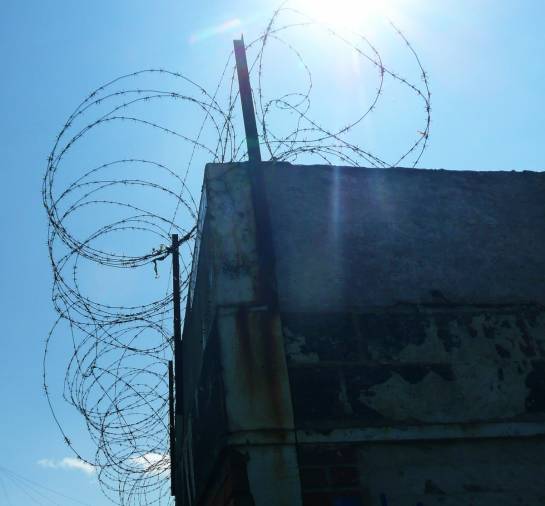|
Elena Terekhova
400 years of Belfast: the Troubled Capital [0] - 17.05.2024
The Ill-fated CapitalThe legal reforms of the 19thcentury removed discrimination against Catholics throughout the island of Ireland. Special programmes now enabled farmers to buy land from landlords. Despite the split in the British Parliament and strong Unionist opposition to the autonomy for Ireland within the UK, known as the Home Rule, it was enacted in 1912 to satisfy the demands of both ethno-religious groups. The great 19th century grieves had been settled by conciliatory British administrations, but continuous rebellions of the Irish Nationalists predominantly in the South of Ireland in attempt to create a Free Irish State, proved it was rather the beginning of grieves.
Partitioning of Ireland in 1922, though aimed at appeasement, served a starting point of aggravating tensions. It established the Free State with predominantly Catholic population (later the Republic of Ireland) in the South; and a new political administration of Northern Ireland, comprising 6 of the 9 counties of Ulster with Belfast as its capital.
Next decades failed to bring Belfast the ‘capital’ glory – just notoriety due to the start of the bloodiest intra-state conflict in the history of the developed countries of the 20th century, aptly named ‘The Troubles’ here.

If cities could talk, they would definitely tell us the stories of their past. Belfast, apparently, does, being unique in this faculty of speech. The murals of the Troubles, located in different parts of the city, depict allegiance to different political parties, paramilitaries and individuals in their struggle. Despite certain ambiguity in the murals’ attractiveness, ‘Political tourism’ remains one of Belfast’s tourist routes. Photo: Raechel Wempen © bordersoff

Photo: Liz Droel © bordersoff

Photo: Elena Terekhova © bordersoff
Wounded Belfast
Late 60s saw the formation of the Civil Rights movements in Northern Ireland as well as all around the world. The percentage of Catholics in Northern Ireland reached 35%, while most civil service, police and governmental posts were taken by the Protestants. The Civil Rights movement came to the streets of Northern Ireland and often ended in street violence. For more than 40 years, Belfast had become a battleground for paramilitary groups of both Loyalist/Unionist and Republican/Nationalist origin, the Royal Ulster Constabulary (transformed into the Police Service of Northern Ireland in 2001), the British Army, Catholics and Protestants building walls to protect their neighbourhoods and kids in the streets throwing stones over those walls.

It’s been a decade since The Troubles are over, but the walls between the neighbourhoods are still here. These "peace lines” are all concrete, steel and razor-wire; scattered throughout Belfast landscape they are sometimes claimed to be protective even nowadays. Some are called "designer peace lines”: decorated with climbing plants, ironically remembering the past and striving for a better future. Photo: Mirela Dimitriu © bordersoff
The years of the Troubles had seen bombing, murders, counter-productive measures of the British administration as internment, police repressions and actions of the British Army bearing close resemblance to what we call ethnic cleansing now. Although having spread throughout Northern Ireland, the Troubles are often described as ‘urban guerilla war’ and have mostly affected towns and cities, Belfast being especially ‘wounded’.

The Europa Hotel is one of Belfast landmarks which has welcomed celebrities from all over the world. However, it is more famous as "the most bombed hotel in the world" after having suffered 28 bomb attacks during the Troubles. Photo: Brian F. McCabe © bordersoff
Having seen the boom of industry and commerce, Belfast was now reduced to devastated factories, barricades and fortified police stations. People on both sides those barricades were focused on war, not work. ‘Siege’ mentality prevailed, the urban structure contributed to it, offering no parks, communal recreational and even shopping facilities. New houses were built with the only exit in order to be manageable by the police in case of insurrection.
20th century sectarianism in the housing estates of Belfast was clearly visible through relevant flag displays in different neighbourhoods. Legislative Acts of 1951 and 1954 in Northern Ireland prohibited the flying of the Irish flag; several acts outlawing the use of Irish language street signs were also passed. Such laws contributed to significant community tension and defiance during the Troubles; and by 1992 over 550 Irish language street signs had been erected in nationalist areas in clear defiance of the law.

For the entire period of the existence of modern states, expressions of political identity have been debatable, as the meaning of symbols is not fixed and depends on context. The flag display in East Belfast is not perceived as violently as it was during the Troubles, although some negative implications still may occur. Photo: Mirela Dimitriu © bordersoff
The Settlement
The British administration clearly saw the immense difficulties of settlement as early as in the 1970s. A series of strikes performed by the IRA prisoners is often seen as a strategy of confrontation between Irish republicans and Margaret Thatcher who remained inexorable.
Since the late 1980s, while the IRA continued its armed campaign, its 'alleged' political wing Sinn Féin, sought a negotiated end to the conflict. Loyalist and republican paramilitaries declared ceasefires in 1994; the talks between the main political parties led to the peaceful settlement known as Good Friday Agreement, or Belfast Agreement of 1998.

In 1998 it seemed more of a miracle: representatives of conflicting parties seating together in the Stormont Castle (seat of the Northern Ireland Assembly, the devolved legislature of Northern Ireland) and trying to reach the common principles to govern a divided society of their land. Photo: Carly Harte. © bordersoff
Six weeks later, by a vote of over 71%, the deal was endorsed by the conflict-weary peoples of the island of Ireland, North and South.

Good Friday Agreement established the present constitutional status of Northern Ireland as part of the United Kingdom. Photo: Mirela Dimitriu © bordersoff
Culture |29.01.2012 | Views: 2155
| Total comments: 0 | |





